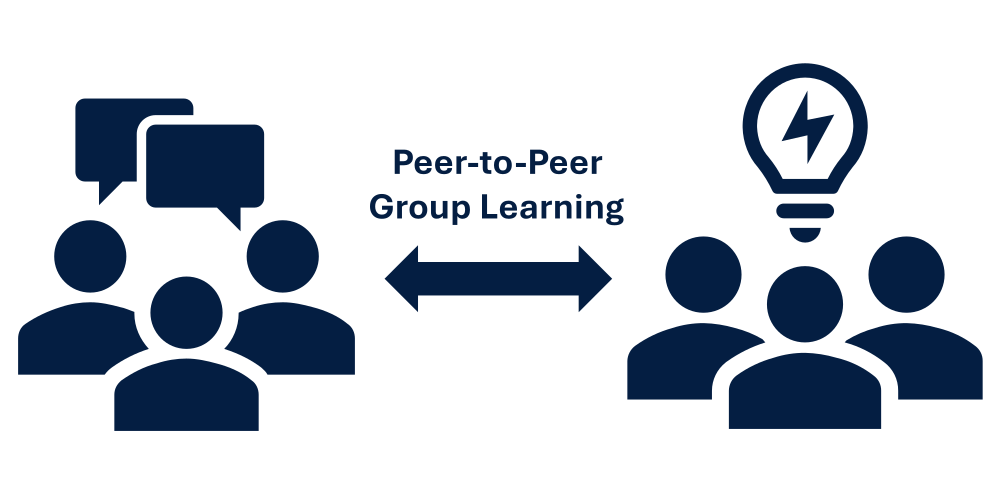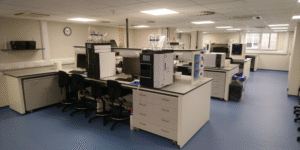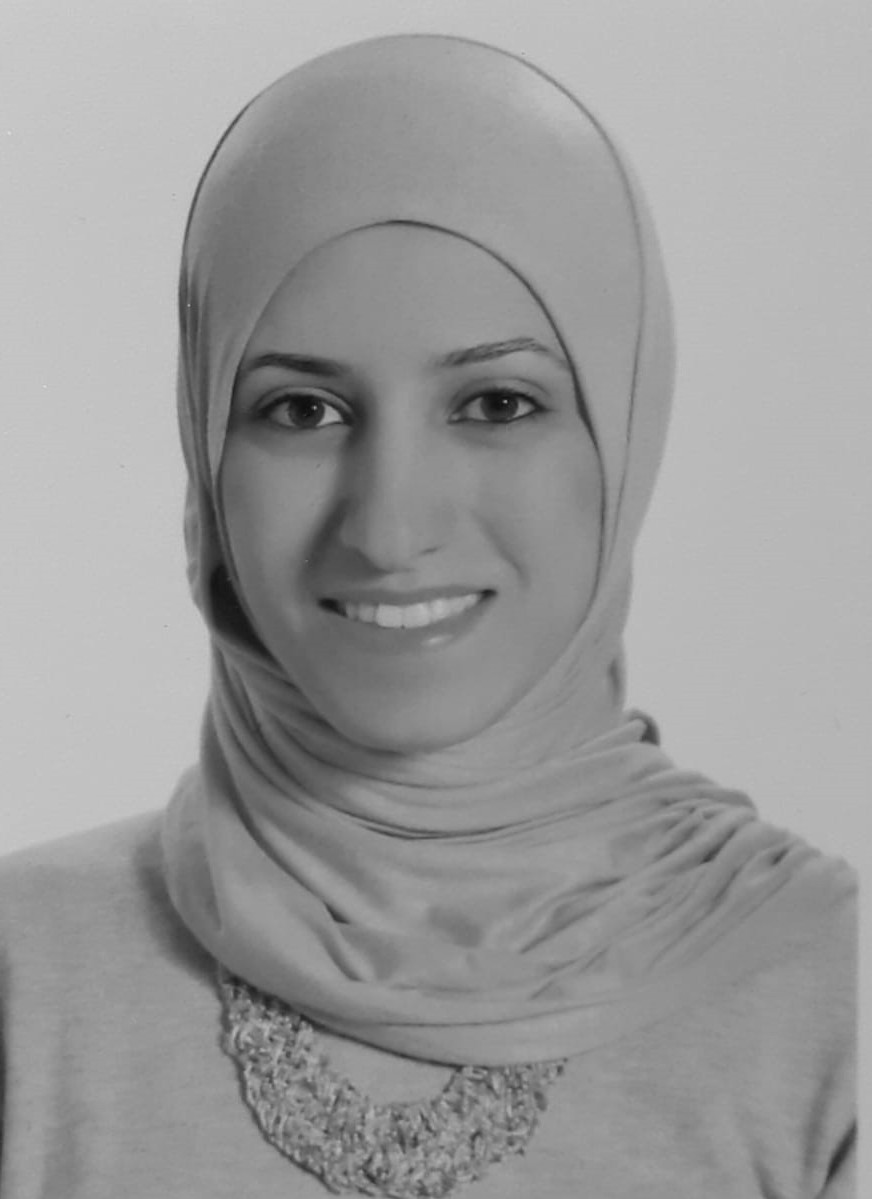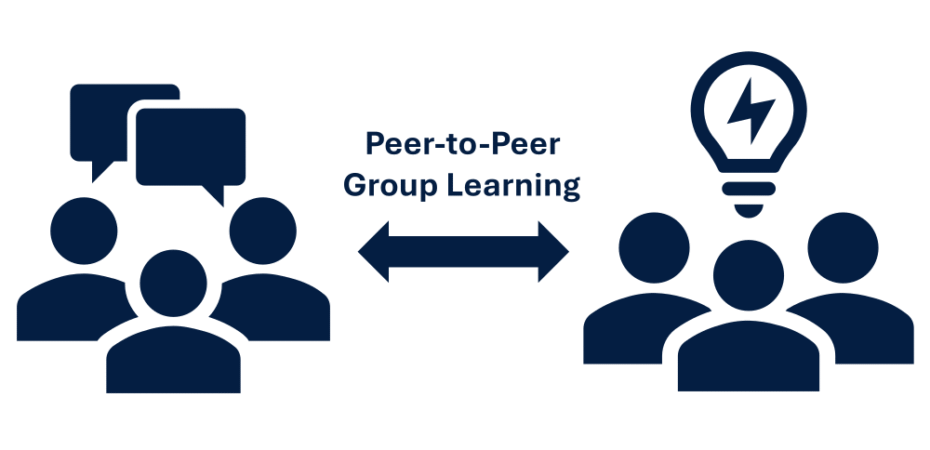
In this post, Dr David August and Rana Abdullah share how a peer-to-peer learning exercise has given students the chance to explore a wider variety of scientific instrumentation whilst simultaneously improving their knowledge retention and communication skills. David is a a Senior Lecturer in Chemical Education and Director of Students at the School of Chemistry, and Rana is a PhD student in the School of Chemistry. This post is part of the Group Work series.
Group work in the laboratory setting is often completed as an exercise in teamwork, with students dividing-up tasks between them in order to complete a set task. Laboratory or instrument training is an essential part of many STEM disciplines—often involving expensive or limited equipment. However, with the current drive to increase student numbers and the group nature of much of the work, this can put pressure on the amount of instrument time each individual student receives and create inequalities in the student experience as a result.
In this blog post, we will be sharing how we have implemented a peer-to-peer learning exercise to give students the chance to explore a wider variety of scientific instrumentation whilst simultaneously improving their knowledge retention and communication skills.
Context
Our one-year Analytical Chemistry programme in the School of Chemistry introduces students to a wide range of analytical instruments housed in our new Analytical Chemistry Instrumentation Suite (ACIS). During semester 2, this included a five-week long group investigation over a total of ten x 3-hour sessions. During these 3-hour sessions, 21 students were divided into four groups across the four available instruments and tasked with using either liquid or gas chromatography to identify and quantify compounds within chilli extracts. This exercise was assessed separately via individual reports, completed after the practical activity and worth 50% of the overall 20-credit course. Splitting the students amongst the available instruments also maximised the students’ valuable hands-on instrument time. However, this approach did limit each group to only one type of instrument. Previous attempts to expand the investigation made it clear that there simply wasn’t time within the available sessions for the students to use both types of instruments effectively, and an already full timetable made running additional sessions impossible.
The idea
A PhD demonstrator on the course, proposed an alternative method: could we ask the students to demonstrate the operation of the instruments to each other?
The activity
We re-designed the lab sessions in the 2024/25 academic year to leave the final hour during the last session free for our peer-to-peer learning activity. Each group was paired with another and the students were tasked with presenting the practical operation of their instrument within the lab setting covering topics including: the theory behind the instrument; the different parts and their function; how to operate the instrument using the software; how to analyse a sample; and any difficulties they faced during the analyses. Each group was given 30 mins and all of the students were expected to participate. Once complete, the groups then switched roles: those teaching became learners and vice versa.
When the exercise began, students were hesitant and required constant encouragement from the staff and demonstrators present. However, once started, the lab was a bustling hive of activity. With a small and familiar audience to present to, the students involved in delivering the teaching were happy to share their knowledge with their peers and even those that struggled with public speaking were more likely to take part. Feedback from the event indicated the students’ excitement and positivity about the exercise and how it increased their confidence.

The peer-to-peer nature of the exercise also facilitated learning. The students, to our pleasant surprise, excelled in simplifying the complex operation of the instruments and in giving examples. This easy transfer of information was likely augmented by their similar backgrounds and level of knowledge as peers, as compared to that of a student with a demonstrator or teacher.
Whilst group work may not be favoured by some students—particularly those that may prefer to learn individually or struggle with the social interactions involved—the small class nature of this activity enabled students to get involved more than they might otherwise have done so.
Reflection
In laboratory sessions, the focus is often on providing as much individual hands-on experience for each student as possible, but this was a great opportunity to open our eyes to the importance of experimenting with different ways of teaching in the lab. It also broke up the standard class routine, which was an enjoyable experience for all and enabled the students to develop a valuable set of transferable skills that employers consistently look for.
Of course, activities like this can be tricky when there is a far larger number of students, but this can be mitigated by grouping the experiments or activities according to the skills learned. Each group can then be paired with others who bring different skills to the table, creating a well-rounded exchange of knowledge. What’s great is that this type of activity isn’t limited to the lab or practical disciplines; it can also work equally well in the classroom.
 David August
David August
David August is a Senior Lecturer in Chemical Education and Director of Students at the School of Chemistry. His is currently the Academic Cohort Lead for all chemistry postgraduate taught (PGT) students and the Academic Lead for the School’s new analytical laboratory teaching facilities (ACIS). With a previous background in supramolecular chemistry, his research interests now include the impact of visuospatial skills on chemistry education, laboratory teaching practices and building community in international student communities.
 Rana Abdullah
Rana Abdullah
Rana Abdullah is a PhD student in the School of Chemistry. She is an Associate Fellowship (AFHEA) accredited by Advance Higher Education. She works as a demonstrator for the Analytical Chemistry MSc programme. She helps students to develop their skills, such as critical thinking and problem solving.


